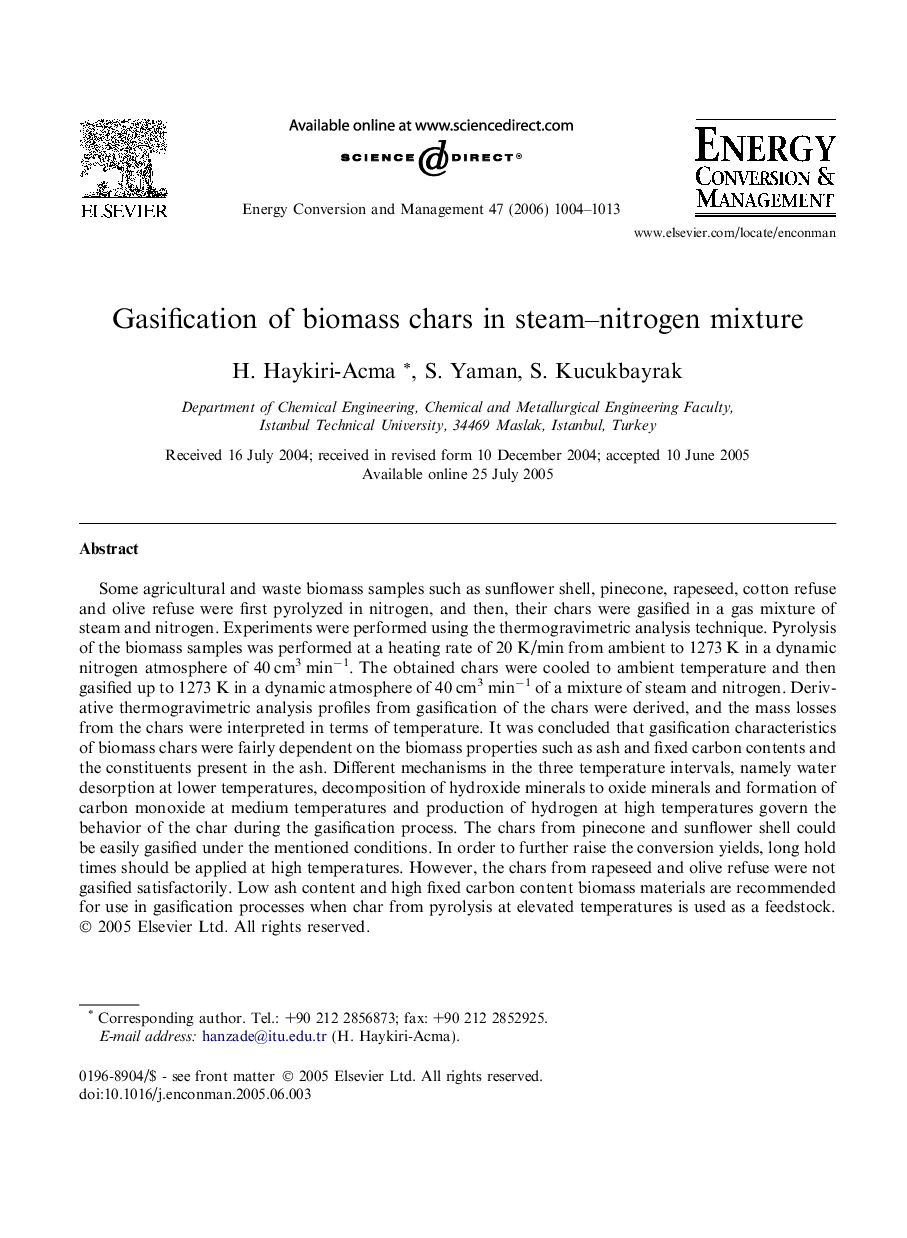| Article ID | Journal | Published Year | Pages | File Type |
|---|---|---|---|---|
| 762423 | Energy Conversion and Management | 2006 | 10 Pages |
Some agricultural and waste biomass samples such as sunflower shell, pinecone, rapeseed, cotton refuse and olive refuse were first pyrolyzed in nitrogen, and then, their chars were gasified in a gas mixture of steam and nitrogen. Experiments were performed using the thermogravimetric analysis technique. Pyrolysis of the biomass samples was performed at a heating rate of 20 K/min from ambient to 1273 K in a dynamic nitrogen atmosphere of 40 cm3 min−1. The obtained chars were cooled to ambient temperature and then gasified up to 1273 K in a dynamic atmosphere of 40 cm3 min−1 of a mixture of steam and nitrogen. Derivative thermogravimetric analysis profiles from gasification of the chars were derived, and the mass losses from the chars were interpreted in terms of temperature. It was concluded that gasification characteristics of biomass chars were fairly dependent on the biomass properties such as ash and fixed carbon contents and the constituents present in the ash. Different mechanisms in the three temperature intervals, namely water desorption at lower temperatures, decomposition of hydroxide minerals to oxide minerals and formation of carbon monoxide at medium temperatures and production of hydrogen at high temperatures govern the behavior of the char during the gasification process. The chars from pinecone and sunflower shell could be easily gasified under the mentioned conditions. In order to further raise the conversion yields, long hold times should be applied at high temperatures. However, the chars from rapeseed and olive refuse were not gasified satisfactorily. Low ash content and high fixed carbon content biomass materials are recommended for use in gasification processes when char from pyrolysis at elevated temperatures is used as a feedstock.
